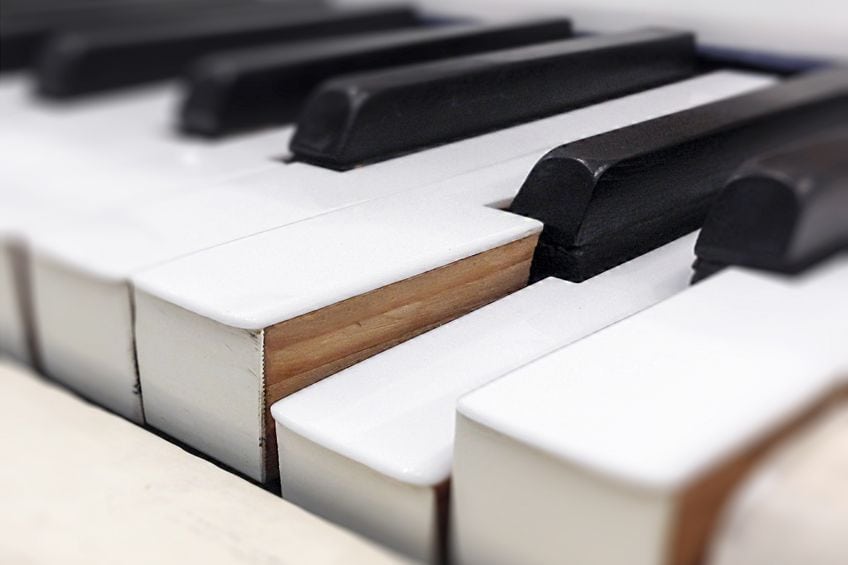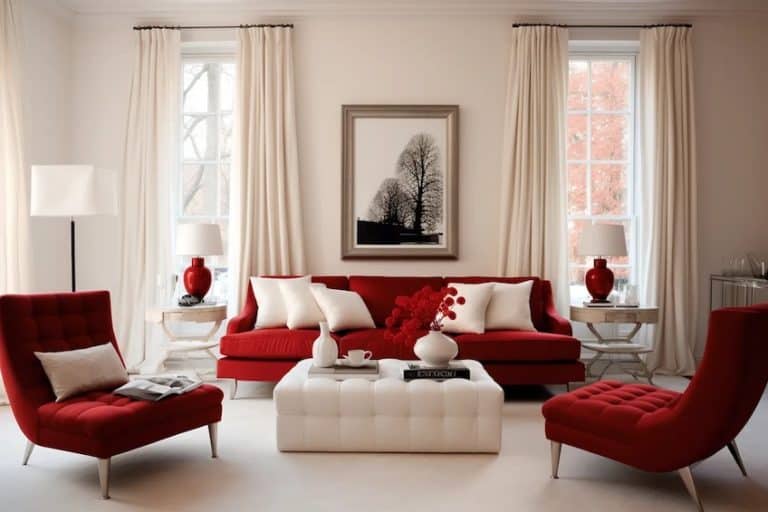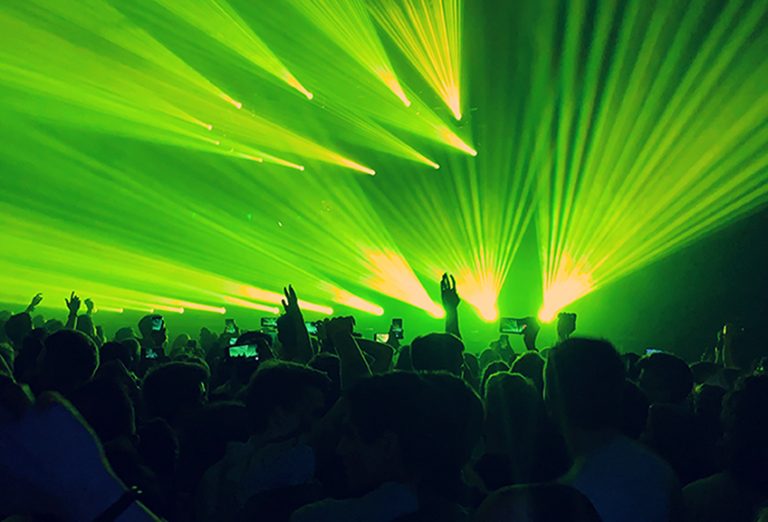Ivory Color – Exploring Different Shades of Ivory and Cream Colors
When you think of an ivory color, what do you think of? Most likely something like elephant tusks and jewelry. However, if you want to know more about the ivory color, we will be covering topics like the difference between ivory and cream color, and whether you can use an ivory color in design. So, if you want to learn about perfect ivory color combinations, read on.
What Color Is Ivory?
An ivory shade forms part of the white color family and can be described as a shade of white. When it comes to ivory vs. white, the difference is that the ivory color has a yellowish or beige undertone. You could also call ivory an off-white color that has a warm bias because of its yellow tint. The color resembles that of actual ivory, which comes from the teeth or tusk of animals like the elephant. New ivory can be observed as being almost white, with a hint of soft yellow color in it. However, as the ivory ages, it can turn more yellow, which then can resemble more of a shade of cream. This is what makes distinguishing ivory and a cream color difficult.

Ivory Color: A Brief History
Certain animals have tusks or teeth that are made from ivory-like elephants, rhinos, walruses, and even some whales. Ivory is a sought-after commodity in many countries, to the detriment of many of these animals it comes from. The tusks are made into ornaments and jewelry, but what makes it a most sought-after product, is its use as a medicine, which has no validity.
The word ivory was first used to describe the tusks of animals like the elephant and has been in use since the 14th century. Another reference to this color is the old keys of a piano, which used to be made from ivory.
When computers came onto the scene, ivory was one of a few web colors that were put together in the late 20th century. Back in the 19th century, the Ivory soap brand was created, which is a soap that still exists today, and which does not contain any scent or color.
The ivory itself has always been a luxury item because of its color, smooth surface, and soft shine. Ivory has been used to carve different items and has been used by various cultures including the Ancient Egyptians, the Chinese, the Japanese as well as India.

Ivory has also been used since Roman times, and during various other periods during history like the Renaissance and Baroque periods, and it continues to this day. Not only used for carving, but ivory also became a type of painting support during the 18th as well as 19th centuries. This became a well-known miniature-painting practice in America and Europe. The ivory was made into thin layers that were then placed onto another support like a card, which could then be painted, using mainly water-based paints.
Ivory Color Meaning
White itself is associated with purity as well as cleanliness, and an ivory color tone has similar associations. However, since ivory has yellow or beige undertones, it is softer and warmer when compared to white. The color is also associated with the actual ivory, so it has a certain elegance and luxury about it.
The ivory color is considered a neutral color, and therefore, it is calming and a versatile color that should work well with most other colors.
| Aspect | Ivory Color Associations |
|---|---|
| Symbols | Purity, Elegance, Calmness, Richness |
| Effects | Soothing, Stabilizing, Softening, Warmth-Inducing |
| Color Psychology | Conveys a sense of calm and comfort, often associated with cleanliness and simplicity |
| Positive | Classic, Timeless, Versatile, Understated Luxury |
| Negative | May be seen as conservative or traditional, potentially bland |
The color is especially popular as a wedding dress color, wedding invitations, and stationery.
Are Ivory and Cream Similar Colors?
Ivory and cream can both be considered shades of white or are also known as off-white colors. The cream color is a bit richer and more noticeable than ivory. Ivory is essentially white, with a hint of yellow in it, while cream has a stronger yellow undertone. So, the cream color can be more accurately described as a pastel color of yellow.
Since cream has a stronger undertone, it is used more for the interior design than clothing as many skin tones might clash. Ivory has been more popular in the clothing industry for its more neutral advantages but still produces that warming effect. However, both colors can be used in art, paint, fashion, and interior design. When choosing paint between these two colors, it is about gauging how much yellow is involved.
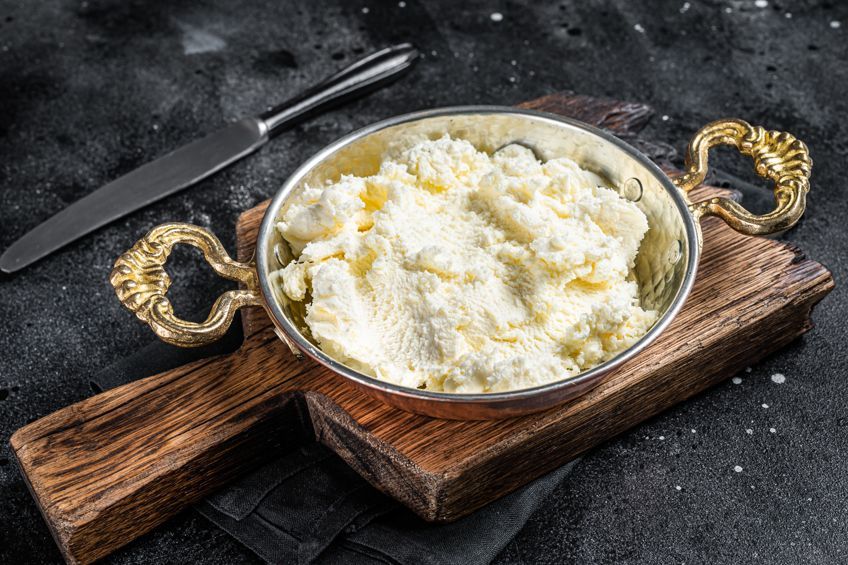
Below you will see a table that represents both colors and you should notice the differences fairly easily. They have completely different hex codes, which is a code that helps to identify colors online. Also, when measuring the percentage of color for web pages and printing, there are standard colors used.
The amount of color for each one is what determines the color, and this is represented in a color code. Webpages use the RGB (red, green, and blue) color model, while printing uses cyan, magenta, yellow as well as black (CMYK). You will notice a few differences when comparing ivory and cream colors.
| Shade | Hex Code | CMYK Color Code (%) | RGB Color Code | Color |
| Ivory | #fffff0 | 0, 0, 6, 0 | 255, 255, 240 | |
| Cream | #fffdd0 | 0, 1, 18, 0 | 255, 253, 208 |
What Are the Different Ivory Shades?
Now that you know a bit more about the color ivory, can you get different ivory shades? Yes, as with all colors, you can get various tones and shades of that color. A tone is created when a pure gray is added, making the original color darker or lighter. Shades are generally darker as more black is added, while tints are lighter as more white is included. Below you will find some of these ivory shades.
| Color Shade Name | Hex Code | RGB | CMYK (%) | Color Visualization |
| Almond | #EFDECD | 239, 222, 205 | 0, 7, 14, 6 | |
| Antique Ivory | #f9ecd3 | 249, 236, 211 | 0, 5, 15, 2 | |
| Antique White | #FAEBD7 | 250, 235, 215 | 0, 6, 14, 2 | |
| Arcadia White | #f3f0e0 | 243, 240, 224 | 0, 1, 8, 5 | |
| Azureish White | #DBE9F4 | 219, 233, 244 | 10, 5, 0, 4 | |
| Bisque | #FFE4C4 | 255, 228, 196 | 0, 11, 23, 0 | |
| Blanched Almond | #FFEBCD | 255, 235, 205 | 0, 8, 20, 0 | |
| Blue Ivory | #6E79C2 | 110, 121, 194 | 43, 38, 0, 24 | |
| Bone | #E3DAC9 | 227, 218, 201 | 0, 4, 11, 11 | |
| Champagne | #F7E7CE | 247, 231, 206 | 0, 6, 17, 3 | |
| Chiffon Ivory | #EDE9D6 | 237, 233, 214 | 0, 2, 10, 7 | |
| Comfort Ivory | #F8F7E2 | 248, 247, 226 | 0, 0, 9, 3 | |
| Cornsilk | #FFF8DC | 255, 248, 220 | 0, 3, 14, 0 | |
| Cream | #FFFDD0 | 255, 253, 208 | 0, 1, 18, 0 | |
| Dark Ivory | #F2E58F | 242, 229, 143 | 0, 5, 41, 5 | |
| Dutch White | #EFDFBB | 239, 223, 187 | 0, 7, 22, 6 | |
| Eggshell | #F0EAD6 | 240, 234, 214 | 0, 3, 11, 6 | |
| Floral White | #FFFAF0 | 255, 250, 240 | 0, 2, 6, 0 | |
| Ivory | #FFFFF0 | 255, 255, 240 | 0, 0, 6, 0 | |
| Ivory Beige | #EBDDBE | 235, 221, 190 | 0, 6, 19, 8 | |
| Ivory Black | #231F20 | 35, 31, 32 | 0, 11, 9, 86 | |
| Ivory Brown | #B09B8C | 176, 155, 140 | 0, 12, 20, 31 | |
| Ivory Castle | #F2E4C5 | 242, 228, 197 | 0, 6, 19, 5 | |
| Ivory Cream | #DAC0A7 | 218, 192, 167 | 0, 12, 23, 15 | |
| Ivory Gray | #C2BBA8 | 194, 187, 168 | 0, 4, 13, 24 | |
| Ivory Linen | #EEE1CB | 238, 225, 203 | 0, 5, 15, 7 | |
| Ivory Paper | #F7F0DF | 247, 240, 223 | 0, 3, 10, 3 | |
| Ivory Porcelain | #EDE5D1 | 237, 229, 209 | 0, 3, 12, 7 | |
| Ivory Satin | #F3DCCE | 243, 220, 206 | 0, 9, 15, 5 | |
| Ivory Silk | #E6D4C5 | 230, 212, 197 | 0, 8, 14, 10 | |
| Ivory Stone | #807966 | 128, 121, 102 | 0, 5, 20, 50 | |
| Ivory White | #F2EFDE | 242, 239, 222 | 0, 1, 8, 5 | |
| Light Ivory | #FFF8C9 | 255, 248, 201 | 0, 3, 21, 0 | |
| Linen | #FAF0E6 | 250, 240, 230 | 0, 4, 8, 2 | |
| Matte Ivory | #D7CEB3 | 215, 206, 179 | 0, 4, 17, 16 | |
| Misty Rose | #FFE4E1 | 255, 228, 225 | 0, 11, 12, 0 | |
| Moccasin | #FFE4B5 | 255, 228, 181 | 0, 11, 29, 0 | |
| Navajo White | #FFDEAD | 255, 222, 173 | 0, 13, 32, 0 | |
| New Ivory | #F2EDDC | 242, 237, 220 | 0, 2, 9, 5 | |
| Off White | #FAF9F6 | 250, 249, 246 | 0, 0, 2, 2 | |
| Old Ivory | #DCD1AE | 220, 209, 174 | 0, 5, 21, 14 | |
| Old Lace | #FDF5E6 | 253, 245, 230 | 0, 3, 9, 1 | |
| Pale Ivory | #FCFBF0 | 252, 251, 240 | 0, 0, 5, 1 | |
| Papaya Whip | #FFEFD5 | 255, 239, 213 | 0, 6, 16, 0 | |
| Pastel Ivory | #F2E7D4 | 242, 231, 212 | 0, 5, 12, 5 | |
| Peach Puff | #FFDAB9 | 255, 218, 185 | 0, 15, 27, 0 | |
| Pearled Ivory | #F0DFCC | 240, 223, 204 | 0, 7, 15, 6 | |
| Pink Ivory | #DBC3BE | 219, 195, 190 | 0, 11, 13, 14 | |
| Sandstone Ivory | #D8CFBA | 216, 207, 186 | 0, 4, 14, 15 | |
| Seashell | #FFF5EE | 255, 245, 238 | 0, 4, 7, 0 | |
| Unmellow Yellow | #ffff66 | 255, 255, 102 | 0, 0, 60, 0 | |
| Vanilla | #F3E5AB | 243, 229, 171 | 0, 6, 30, 5 | |
| Warm Ivory | #EFE0CD | 239, 224, 205 | 0, 6, 14, 6 | |
| Wheat | #F5DEB3 | 245, 222, 179 | 0, 9, 27, 4 |
Ivory Color Combinations
To achieve the best color combinations, it is helpful to gain some knowledge of color theory. Learn about a color wheel, which is a visual depiction of the colors and how they work together. Doing this will make it easier to choose the correct color schemes.
Below are some color combinations that work best with ivory. Besides these, you can also look for terms like a monochromatic color scheme, which are variations of a single color or triadic colors that involve three colors that are evenly spaced on the color wheel in a triangle shape.
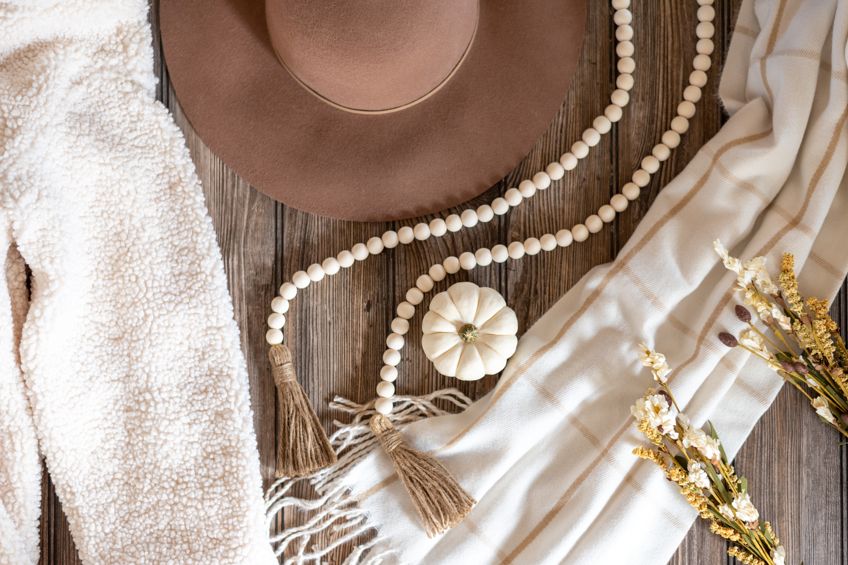
Split Complementary Colors
Another option is to use the colors directly next to your complementary color, one on each side. You have a light blue and an extremely pale violet for this example. Light purple colors can work fine with ivory, but deeper and darker purples can form a more intense contrast.
This combination usually makes a popular wedding color scheme.
| Ivory Shade | Ivory Hex Code | CMYK Ivory Color Code (%) | RGB Ivory Color Code | Color |
| Alice Blue | #f0f8ff | 6, 3, 0, 0 | 240, 248, 255 | |
| Ivory | #fffff0 | 0, 0, 6, 0 | 255, 255, 240 | |
| Pale Violet | #f8f0ff | 3, 6, 0, 0 | 248, 240, 255 | |
| Deep Purple | #570861 | 10, 92, 0, 62 | 87, 8, 97 |
Complementary Colors
These are colors that are found on opposing sides of the color wheel. When positioned alongside each other, they form a contrast, or they make each other stand out more. In this case, the complementary color of ivory is an extremely pale, almost white pale blue color, as seen below. However, any light blue can also work nicely with ivory. A darker, bold, navy blue can add even more contrast.

| Ivory Shade | Ivory Hex Code | CMYK Ivory Color Code (%) | RGB Ivory Color Code | Color |
| Ivory | #fffff0 | 0, 0, 6, 0 | 255, 255, 240 | |
| Pale Blue | #f0f0ff | 6, 6, 0, 0 | 240, 240, 255 | |
| Light Blue | #add8e6 | 25, 6, 0, 10 | 173, 216, 230 | |
| Navy Blue | #000080 | 100, 100, 0, 50 | 0, 0, 128 |
Analogous Color Combinations
These colors work well together as they are located next to each other or close to each other on the color wheel. These would include a pale, almost white, orange, and green. Of course, you can also try other shades of orange and green with ivory. You can go for lighter greens or darker greens like Jade.
Ivory always looks great next to other warm colors, so stronger colors like burnt orange can also work.
| Ivory Shade | Ivory Hex Code | CMYK Ivory Color Code (%) | RGB Ivory Color Code | Ivory Color |
| Burnt Orange | #cc5500 | 0, 58, 100, 20 | 204, 85, 0 | |
| Very Pale Orange | #fff8f0 | 0, 3, 6, 0 | 255, 248, 240 | |
| Ivory | #fffff0 | 0, 0, 6, 0 | 255, 255, 240 | |
| Very Pale Green | #f8fff0 | 3, 0, 6, 0 | 248, 255, 240 | |
| Jade | #00a36c | 100, 0, 34, 36 | 0, 163, 108 |
Ivory and Neutrals
Since ivory is itself neutral, it can form great combinations with other neutral colors. Ivory and white go well together, as do beige and ivory. These two colors can create an elegant tonal look when used together. To add more contrast, why not try pairing it with a chocolate brown?
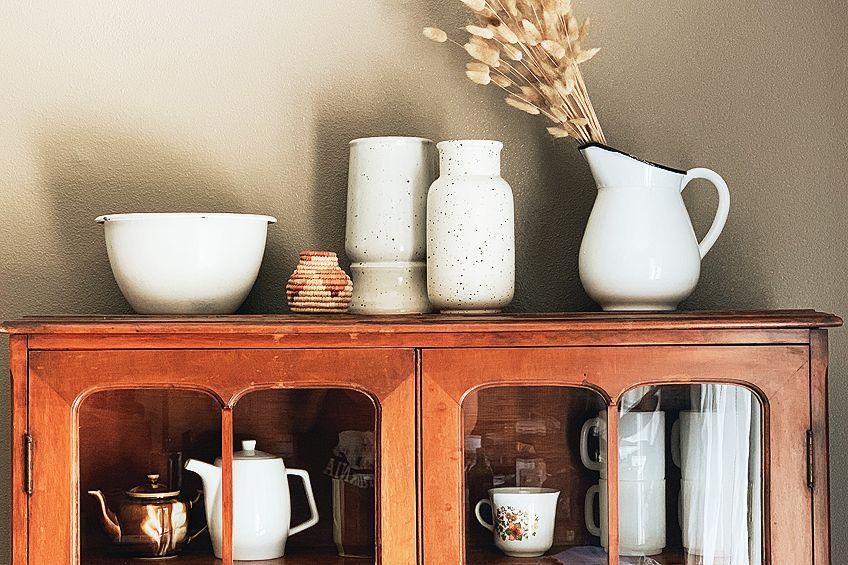
| Ivory Shade | Ivory Hex Code | CMYK Ivory Color Code (%) | RGB Ivory Color Code | Ivory Color |
| Beige | #f5f5dc | 0, 0, 10, 4 | 245, 245, 220 | |
| Ivory | #fffff0 | 0, 0, 6, 0 | 255, 255, 240 | |
| Chocolate Brown | #3f000f | 0, 100, 76, 75 | 63, 0, 15 |
An Ivory Color in Design
An ivory color can be used in all forms of design including web, fashion, and interior design. The color itself is relaxing and easy on the eye. Ivory is a well-liked color when it comes to clothing, especially for things like wedding dresses and formal wear. However, you could also go for ivory jerseys, dresses, tops, and other outfits.
As a neutral color, it can work great as an interior background, with bolder colors added as a contrast.
Ivory can be a nice alternative to simply using white, as it has a much warmer undertone. The color can be used as paint for walls and can open up a room and allows the natural light to reflect in a space, which can also make a room look larger, so it can be a good idea for smaller rooms or hallways.
Along with bolder colors, you could also add dark brown furniture and deeper toned wooden floors for added contrast. You could apply an ivory color to most living spaces including bathrooms as well as bedrooms. You can also use ivory as an accent color if you wish and play it up against a white palette theme.

Unfortunately, like white, ivory can easily show up dirt or marks on couches and other surfaces. So, consider this if you do choose this color for such things. Also, you can incorporate less ivory, for example, instead of installing a complete ivory carpet, think about a wooden floor with a smaller ivory rug instead. In the end, ivory can be seen as a sophisticated and easy-to-use color that can match most design styles.
White can sometimes be too clinical, bright, and even cold, but now that you have discovered ivory, there is a whole other side to the choice you have. Ivory is a more elegant color, that can still provide a clean feeling but is much warmer, calmer, and more luxurious.
Take a look at our color ivory webstory here!
Frequently Asked Questions
What Color Is Ivory?
Ivory is a warmer and more colorful version of pure white and contains a slight yellow undertone. The color is also known as off-white and is a fashionable choice for wedding dresses. The color name comes from the ivory obtained from the tusks of certain animals like elephants. This smooth ivory substance gains a yellow tinge as it ages, which is where the color originated from.
How Are Ivory, Cream, and White Colors Similar?
When it comes to ivory vs. white, ivory can be defined as a shade of white. The cream color is also classified as a shade of white, but the main difference between ivory and cream is the amount of yellow. This makes ivory closer to white, with a small amount of yellow, while cream has substantially more yellow, making it more vibrant in appearance.
Is Ivory Paint a Good Idea for Walls?
Yes, ivory is a warm-toned shade of white and is a great choice for interior walls. The color can make a room feel brighter, warmer, and bigger as it reflects the light. This makes it a good color choice for smaller rooms or rooms that have few windows. Ivory also acts as a great background, so you can add bolder colors.
In 2005, Charlene completed her Wellness Diplomas in Therapeutic Aromatherapy and Reflexology from the International School of Reflexology and Meridian Therapy. She worked for a company offering corporate wellness programs for a couple of years, before opening up her own therapy practice. It was in 2015 that a friend, who was a digital marketer, asked her to join her company as a content creator, and this is where she found her excitement for writing.
Since joining the content writing world, she has gained a lot of experience over the years writing on a diverse selection of topics, from beauty, health, wellness, travel, and more. Due to various circumstances, she had to close her therapy practice and is now a full-time freelance writer. Being a creative person, she could not pass up the opportunity to contribute to the Art in Context team, where is was in her element, writing about a variety of art and craft topics. Contributing articles for over three years now, her knowledge in this area has grown, and she has gotten to explore her creativity and improve her research and writing skills.
Charlene Lewis has been working for artincontext.org since the relaunch in 2020. She is an experienced writer and mainly focuses on the topics of color theory, painting and drawing.
Learn more about Charlene Lewis and the Art in Context Team.
Cite this Article
Charlene, Lewis, “Ivory Color – Exploring Different Shades of Ivory and Cream Colors.” Art in Context. June 8, 2022. URL: https://artincontext.org/ivory-color/
Lewis, C. (2022, 8 June). Ivory Color – Exploring Different Shades of Ivory and Cream Colors. Art in Context. https://artincontext.org/ivory-color/
Lewis, Charlene. “Ivory Color – Exploring Different Shades of Ivory and Cream Colors.” Art in Context, June 8, 2022. https://artincontext.org/ivory-color/.


